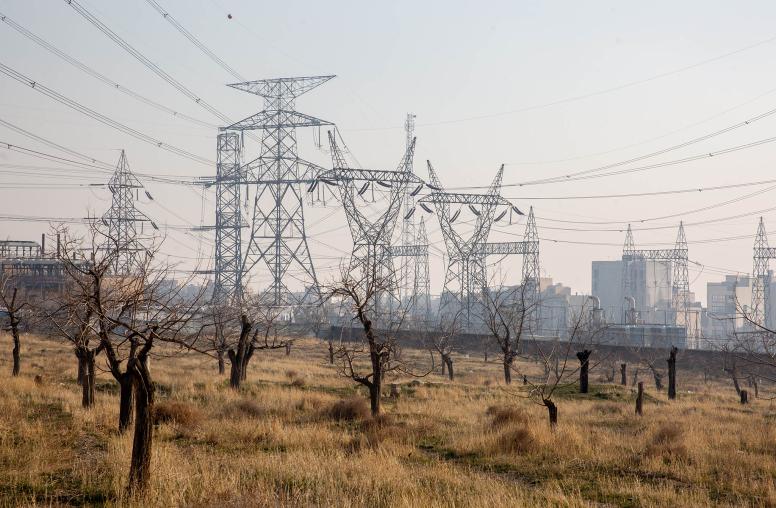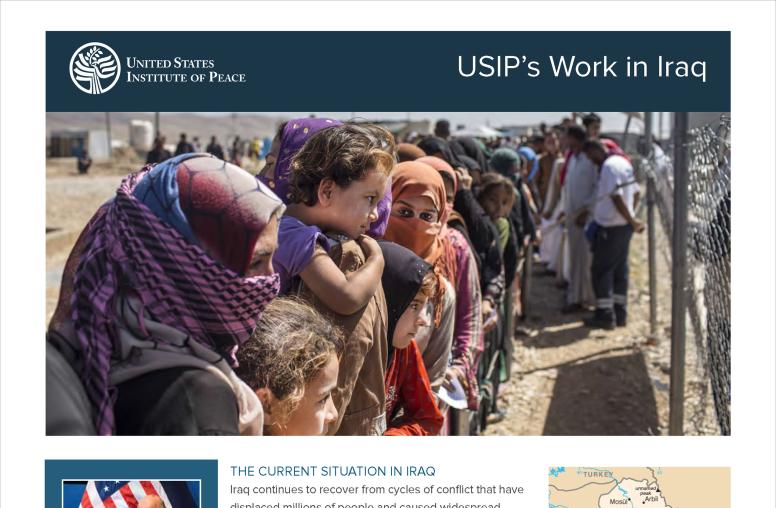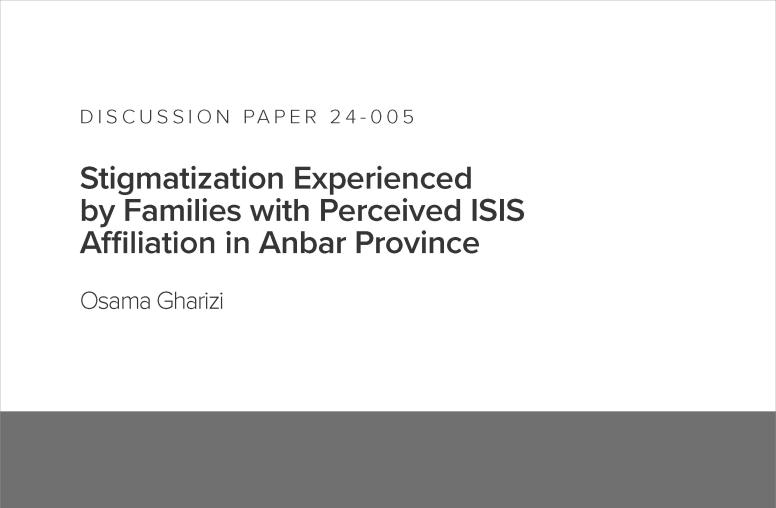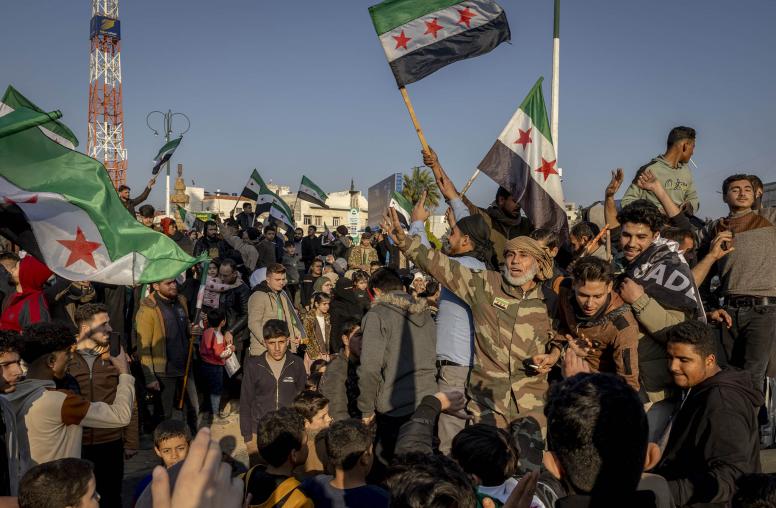What to Do When Foreign Fighters Come Home
Not every Westerner who comes home after joining the Islamic State is a threat. But whether they ultimately live a life of peace or violence can be shaped by what they find when they get back.
Since the Islamic State began its rampage through the Middle East, more than 20,000 people from around the world are estimated to have traveled to join the group. Of that figure, compiled from government data by the International Centre for the Study of Radicalization and Political Violence, a London-based research center, many will die. But many will also return either to their countries of origin or relocate somewhere new.
The choices these men and women make next, the sorts of lives they will lead, and the threat they may pose to their communities will be heavily determined by what options they have in this next stage of their lives, and how they are treated upon return. There is a pressing need to develop effective strategies to respond to these returnees — and these strategies must be rooted not only in a clear understanding of the reasons why these people left their home nations in the first place, but also what propelled them to return. Because, by utilizing a targeted and thoughtful strategy, governments can keep their communities safe while still acknowledging that not every returnee is a potential threat.
Fear of the returning fighters, and the security threat they may pose, is not a new concern — before the Islamic State became a beacon, foreign fighters from Arab countries, the United States, and Europe were drawn to the conflicts in Bosnia and Afghanistan. But studies show that only a small proportion engaged in violent activities upon return to their homes. Thomas Hegghammer of the Norwegian Defense Research Establishment studied the impact of Western fighters returning after joining jihadi groups in places such as Afghanistan and Somalia over a 20-year period. He found that a clear minority of returning fighters presented a true and lethal risk. Because the number of fighters traveling to Iraq and Syria is higher by a degree of magnitude, however, identifying those who do present this risk is all the more critical.
Many countries both in Europe and North Africa have opted to treat all foreign fighters returning from Iraq and Syria as potential threats, criminalizing their travel and association, even though there is often little evidence to prove exactly what they did and how engaged they were in the “fighting.” In some cases, the treatment they receive upon return by security forces or in prisons can further radicalize returnees and forge behavior that may not have occurred otherwise. Other punitive policies such as confiscating passports or revoking citizenship can serve to ostracize the returnees in ways that present a true barrier to de-radicalization and reintegration.
The experience of and exposure to the brutality of groups like the Islamic State, Boko Haram, and al-Shabab has been, and will be, deeply disillusioning for some who attempt to join their ranks. Although the reasons why individuals leave terrorist groups have been less studied than why they join in the first place, research published in the Journal of Peace Research on “formers” points to disappointment in leadership as a motivating factor for leaving. Some who return may be damaged, scarred physically and emotionally by the experience, and in need of psycho-social support. In Nigeria and Kenya, USIP research found that trauma is prevalent not just among victims of violent extremism, but also among those who have joined in the violence, especially young teenagers. Options for recovery are limited — which poses a problem because it is possible that untreated, traumatized former fighters may be more prone to acts of violence.
With unprecedented numbers of people responding to ISIS’ call to arms—from the United States, Europe, North Africa, Saudi Arabia, the Gulf States, Central Asia, Australia, and Indonesia—governments must ensure that their law enforcement responses to returning fighters are fair and accountable. Also, they must develop viable strategies to prevent returning fighters from continued involvement in violent activity. For that, it is helpful to look at which approaches have worked in other contexts and which have failed.
Programs to de-radicalize violent extremists since 9/11 in places like Saudi Arabia, Indonesia, and Yemen have focused on attempts to contradict and refute the doctrinal and ideological beliefs that were used to justify violence: Religious leaders were often engaged to publicly demonstrate the logical and moral errors in the rhetoric that was used to support the call to violence. These types of programs, often government-run, have however proven to be only partially successful.
This is largely because the reasons why individuals join violent extremist groups are only ever partially about the ideology: The ideological narrative is the hook that draws the fighters in, but the narrative is how they are recruited, not why. The government-run de-radicalization programs in Singapore and Indonesia, for example, that target members of Jemaah Islamiyah, the group responsible for the attacks in Bali in 2002, showed limited success because these programs failed to address the reasons individuals engaged: search for meaning, belonging, or identity that came with being part of the cause, the opportunities membership offered, or a desire to seek justice or revenge for real and perceived grievances. Efforts to employ “formers” or “rehabilitated violent extremists” as spokespersons for prevention backfired in some cases because the formers never truly renounced their beliefs.
Scholars who have studied the problem of violent extremism through a psychological lens have noted this challenge of cognitive dissonance in de-radicalization.Humans are unlikely to let go easily of beliefs that justify and support their behavior, especially extreme behavior. In fact, as some studies have shown, beliefs often change after our behavior changes, not the other way around. John Horgan and Tore Bjorgo, well-known researchers in this field, wrote in their 2008 bookLeaving Terrorism Behind: Individual and Collective Disengagement, that “some individuals are stripped of their radical views as a consequence of having left the group rather than that being a cause for leaving.”
Saudi Arabia began a program to rehabilitate those fighters who had returned from fighting in Afghanistan shortly after 9/11. The program, housed in what is known as the Care Rehabilitation Center outside of Riyadh, emphasized de-radicalization sessions with clerics and psychological counselors, and also financially incentivized fighters to disengage in violence. The limitations of this program were highlighted in 2009, when Saudi authorities arrested nine of its graduates arrested for rejoining terrorist groups. Two other former students of the program, both of whom had been imprisoned at Guantanamo Bay, were found to have joined the Yemeni branch of al Qaeda. This led to an overhaul of the program that increased attention on addressing behavioral factors as opposed to the motivating beliefs and ideologies, emphasizing instead relationships and opportunities to rejoin society. The program that was started in 2008 and has graduated more than 3,000 returnees, now focuses on the returnees’ families and acknowledges the importance of social, familial, and national relationships in reintegrating foreign fighters.
Peer and family relationships are key factors not only in shaping choices to join violent extremist groups in the first place but also in successful de-radicalization and reintegration efforts. Many of the youth who have traveled from Northern Europe have come from the same (often small) communities and social networks. In the city of Aarhus in Denmark, home to several dozen fighters, the East Jutland Police and Aarhus Municipality have spearheaded a reintegration program that emphasizes personal relationships and life skills. As profiled in a October 2014 Newsweek article, “the Danes are treating their returned jihadists as rebellious teenagers rather than hostile soldiers beyond redemption.” Returnees are given assistance in education, employment, and with repairing their relationships.
Programs designed to disengage right wing extremists in Norway, Germany, and Sweden have also largely been considered successful because of their emphasis on family relationships, life skills, and a lesser focus on addressing the extremist ideology. These types of programs are rooted in the idea that reintegration into society is what will in time truly de-radicalize individuals and prevent them from engaging in violence again. These programs can offer individuals a second chance at life and the opportunity to turn in a different direction. These programs, where they exist, are an important corollary to accountable and fair law enforcement responses — not every returning foreign fighter is a terrorist attack waiting to happen.
Reposted with permission from ForeignPolicy.com, Source: “What to Do When Foreign Fighters Come Home"



